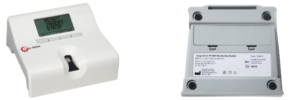Are patients using PT/INR meters at home? Yes. Preferred by both patients and doctors, use of at home testing devices is expanding and is expected to continue to grow over the next five years.
PT/INR monitoring is among the tests that can be performed by motivated patients at home decreasing the number of trips to a lab for blood draws. A variety of portable devices are available for in-home use including the Coag-Sense® PT/INR System.
How often do I test?
Before testing at home, it is important to talk to your health care provider about the test results you should expect and when/ how you should contact them with your results. A test is typically performed every week for optimal monitoring of coagulation levels. Your general health and diet as well as other medications and supplements could affect your body’s response to warfarin and subsequently your dose or monitoring schedule.
When do I need to contact my provider immediately?
Although PT/INR monitoring at home is convenient, there are some associated risks. If any of the following occur, seek immediate medical attention:
- sudden, unexpected bleeding or bleeding from an injury that does not stop
- blood in urine or bowel movement
- severe stomach pain
- vomiting blood
- bruising on your skin without underlying reason
- leg pain
- shortness of breath
- confusion, demonstrated by difficulty speaking or understanding speech
- sudden vision loss
- sudden severe headache
- weakness or numbness of face, arms, legs or trouble walking, dizziness
When should my INR results cause concern?
You and your health care provider will identify a target INR range. If your result is outside if that range, you should contact your provider immediately. If your INR result is above 4.5, your provider will wish to have a blood test performed at a laboratory to confirm the appropriate warfarin dosing.
For more information and tips for patients and caregivers using PT/INR meters at home, review the following advice provided by the US FDA.



